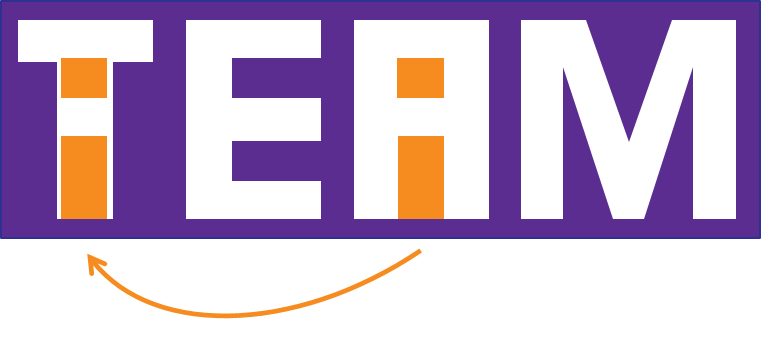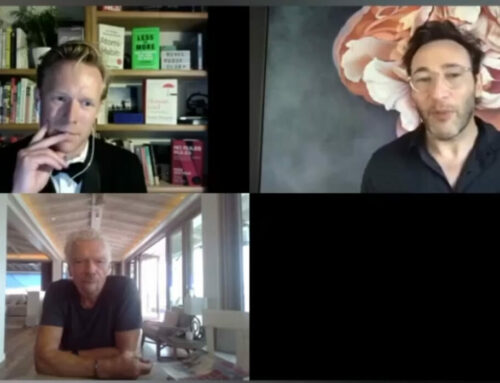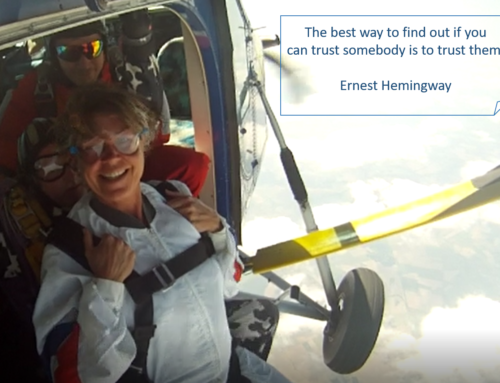Forget about team building; go teaming
Stable teams disappear and with it the classic team building. One day you work in one team, the next in another. Team members have to achieve results together in varying compositions and in a short time become, the acclaimed high performance teams. This requires personal leadership and active attention to team development. Get rid of old images like the individual disappearing into a good team or team building as a separate activity, what is needed are team members who can team up.
Teaming is a verb
“Teaming is the ability to quickly build relationships with people we don’t know yet, to feel comfortable with them, to share our knowledge with them and to come to new knowledge together. In addition, fast results are needed, so that there is less and less time to use team building as a separate activity. We must simultaneously work on our task and develop our team skills, ”said Harvard’s Amy Edmondson. In her research into how organizations learn and innovate, she comes to the conclusion that teaming is a core skill in the knowledge economy. Teaming requires awareness, communication, trust, collaboration and the willingness to reflect. In addition to these skills, a context is needed in which all those involved appreciate the experiment – and the failure that comes with experimenting.
Teaming starts with I
I regularly hear team members say ‘there’s no I in team’, to which others respond with ‘yes there is’ and then show an image that incorporates the I into the A. I even heard someone respond with ‘hidden in the A-hole’. You can see this addition as a plain joke, but it does contain a compelling signal for those who show their ‘I’ in the collaboration.

Not only do we see the I in the word team, the place is even more prominent: namely as part of the first letter (see image). Teaming starts with Me.
That ‘I’ can quickly and briefly enter into a result-oriented collaboration if it:
- knows itself and can translate that self-knowledge into its behavior and expectations of others;
- sees itself and the other as crucial conditions for a successful result;
- can contribute to a safe context in which there is room for everyone’s contributions, doubts, (help) questions and in which there is also room for conflicts.
We explain each point below.
Directing my behaviour and adjusting expectations
Knowing myself starts with knowing what my behavioral preferences are, but also knowing what brings out the best and what brings out the worst in me. We don’t like to talk about that, but that is precisely what is important for your team members to know. That’s how I know that when I start to feel lonely, I become villainous. Then I continue the feeling of loneliness, work harder and make decisions myself instead of putting them to my teammates. Based on this, I propose as a process agreement to do a touch base regularly; a round with two questions: how are you and what do you need? These questions help me to identify or prevent my loneliness early on.
By translating self-knowledge into expectations you have of your team members, you lay an essential foundation for good cooperation.
In our interventions, we invite team members to express their cooperation expectations and record them in process agreements. The quality of the process agreements and the discussion to reach those agreements says a lot about the extent to which the team members have the expertise and the courage to express their own needs. Unfortunately, it rarely happens that we hear someone say: “What I need is…”
To illustrate a qualitative difference in process agreements, we use the example of agreements on the use of mobile phones. One team comes to the process agreement “mobile phones off during joint sessions”, the other team “do whatever you need to be present”. The first agreement is concrete, verifiable and limiting, the second is based on trust and personal responsibility.
When agreements about respect come up, usually some team members drop out: “Now we are making agreements that are part of normal behavior. We don’t need to agree on that. Respect is respect. ” After which the discussion stops for a moment and the team experiences a storming moment. But if you want to treat each other with respect, the concept requires further exploration and that requires self-knowledge: what do I understand by respect, so what do I expect from others and how do we attune our behavior to each other’s expectations?
Wé are critical conditions for success
Being part of a team that must deliver a result means recognizing that every team member is a vital condition for that joint success. This requires awareness of the individual and starts with ‘me’: I am crucial myself and therefore bear joint responsibility for our success.
In our experience, this consciousness is easily stepped over, so that team members feel more likely to be placed in a team than to have stepped in and feel like a member of the team. It’s about actively joining the team and appreciating your team members.
At one of our clients, a project manager receives an assignment from his superior and a client. He then describes his vision on the assignment and indicates which team members he needs to realize that vision. He composes his project team in consultation with the managers of his intended team members. Not all the required forces are available, so he ends up having the ‘B team’. Now all team members have been legalized by their managers and the team can start. At the end of the kick-off, we heard a project manager ask the questions: “Are we in agreement? Do each of you currently have the confidence that we will be successful with this team and with me as project leader? ” A daring question that got all team members thinking; he asked for identification of himself and all team members.
Another project leader once put it as follows: if you are the trainer of the F-jes, then the children in your team are the playing figures that you will do it with. You cannot then exclude players; you learn to use the weakest link and to compensate for his weakness as a team.
A safe context – you co-create yourself
Various studies (including Google’s Project Aristotle and Edmondson’s book Teaming (see bibliography)) show that psychological safety is crucial for the degree to which a team achieves high performance.
Psychological safety arises when every team member dares to speak up – even if his opinion is different -, can ask for help, is self-critical (for example by identifying his own part in a problem), experiences that mistakes are translated into lessons, and have conflicts, without being punished or humiliated for them. We find it too easy to place primary responsibility for this context with the team leader. Of course he plays a big role, but if team members do not correct the behavior of the leader, they themselves also contribute to an unsafe context.
Certainly if we do not work in the same team on a daily basis, but have to achieve results quickly, a safe context requires attention. At the start of the collaboration, it is advisable to spend the first team meeting largely on personal acquaintance, exchanging expectations and previous (project) experiences (what did / did not work well there?) And establishing the process agreements, and only a small part to the joint result. Also helpful is an evaluation at the end of each team meeting: what went well, what could be improved and what agreements do we make based on those first two questions? By visibly recording this evaluation and going through that evaluation again during the next team meeting, insight is gained into team development.
The context only becomes truly secure when the team members have weathered ‘heavy weather’, for example due to an error, a conflict or a setback. Converting the mistake into a lesson, using the conflict as a tightening up of expectations, or accepting the setback is not enough. In any of these cases, the team members involved must know that they have been cleared of punishment or humiliation. Only then will it be or will it remain safe for other team members to continue to experiment and speak up.
Trust
Teaming starts with the individual being aware of their own needs and those of their teammates. To become a high performing team, team members must trust each other. Trust is a word that is often used in collaboration, but when we explore the concept with teams, we notice that few people know exactly what trust is and especially what you can do to build trust. So the next article is about trust.
Sources
Edmondson, Amy Teaming: How Organizations Learn, Innovate, and Compete in the Knowledge Economy, 2012, Jossey-Bass Pfeiffer
Strobbe, Marieke; Hans Veenman, Leo de Bruijn, Menno Valkenburg Five frustrations of project managers and what you can do about it, 2017, Mediawerf (gelijktijdig in het Engels uitgegeven)
Google’s project Aristoteles:
https://rework.withgoogle.com/guides/understanding-team-effectiveness/steps/introduction/



